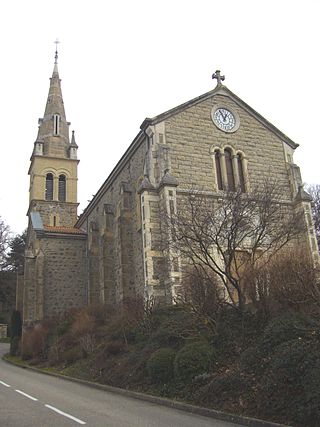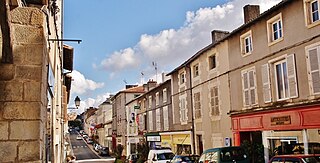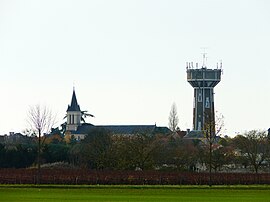
Poitiers is a city on the river Clain in west-central France. It is a commune and the capital of the Vienne department and the historical centre of Poitou. In 2021 it had a population of 90,240. Its conurbation had 134,397 inhabitants in 2021 and is the center of an urban area of 281,789 inhabitants. It is a city of art and history, still known as "Ville aux cent clochers".

Indre-et-Loire is a department in west-central France named after the Indre River and Loire River. In 2019, it had a population of 610,079. Sometimes referred to as Touraine, the name of the historic region, it is nowadays part of the Centre-Val de Loire region. Its prefecture is Tours and subprefectures are Chinon and Loches. Indre-et-Loire is a touristic destination for its numerous monuments that are part of the Châteaux of the Loire Valley.

Charente is a department in the administrative region of Nouvelle-Aquitaine, south western France. It is named after the river Charente, the most important and longest river in the department, and also the river beside which the department's two largest towns, Angoulême and Cognac, are sited. In 2019, it had a population of 352,015.

Deux-Sèvres is a French department. Deux-Sèvres literally means "two Sèvres": the Sèvre Nantaise and the Sèvre Niortaise are two rivers which have their sources in the department. It had a population of 374,878 in 2019.

Haute-Vienne is a département in the Nouvelle-Aquitaine region in southwest-central France. Named after the Vienne River, it is one of the twelve départements that together constitute Nouvelle-Aquitaine. The prefecture and largest city in the department is Limoges, the other towns in the department each having fewer than twenty thousand inhabitants. Haute-Vienne had a population of 372,359 in 2019.

Châtellerault is a commune in the Vienne department in the Nouvelle-Aquitaine region in France. It is located in the northeast of the former province Poitou, and the residents are called Châtelleraudais.

The arrondissement of Poitiers is an arrondissement of France in the Vienne department in the Nouvelle-Aquitaine region. It has 83 communes. Its population is 259,699 (2016), and its area is 2,131.5 km2 (823.0 sq mi).

Alloue is a commune in the Charente department in the Nouvelle-Aquitaine region of southwestern France.

Estrablin is a commune in the Isère department in southeastern France. Located near Vienne (7 km) and Lyon (30 km), Estrablin is attractive for its calm and its rural atmosphere. The name of the town is believed to be derived from the French word defining aspens (tremble), a species of poplar trees locally present in large quantities, especially along the rivers.
Asnières-sur-Blour is a commune in the Vienne department in the Nouvelle-Aquitaine region in western France. The commune has 180 inhabitants (2019).
Mirebeau is a commune in the Vienne department, in the region of Nouvelle-Aquitaine, western France.

Champagné-Saint-Hilaire is a commune in the Vienne department in the Nouvelle-Aquitaine region in western France.

Saint-Martin-l'Ars is a commune in the Vienne department and Nouvelle-Aquitaine region of western France.

Usson-du-Poitou is a commune in the Vienne department in the Nouvelle-Aquitaine region in western France.
Jouhet is a commune in the Vienne department and Nouvelle-Aquitaine region of western France.

Lussac-les-Châteaux is a commune in the Vienne department in the Nouvelle-Aquitaine region in western France.

Chasseneuil-du-Poitou is a commune in the Vienne department, administrative region of Nouvelle-Aquitaine, western France.

Genouillé is a commune in the Vienne department in the Nouvelle-Aquitaine region in western France. Its population has been declining from its peak of 1495 in 1886 to its current level of 504 (2018).

Vienne is a landlocked department in the French region of Nouvelle-Aquitaine. It takes its name from the river Vienne. It had a population of 438,435 in 2019.

Valence-en-Poitou is a commune in the Vienne department in the Nouvelle-Aquitaine region in western France. It was established on 1 January 2019 by merger of the former communes of Couhé, Ceaux-en-Couhé, Châtillon, Payré and Vaux.





















